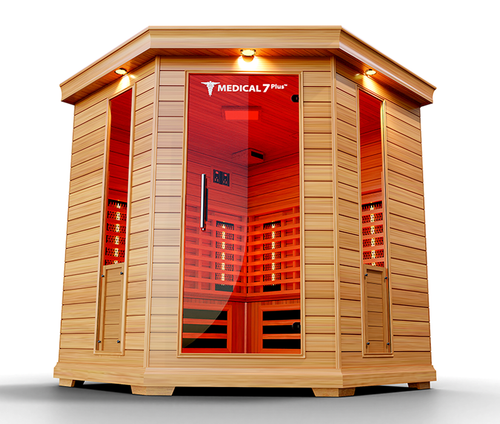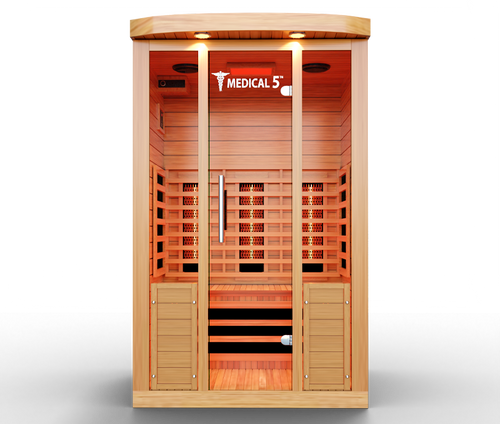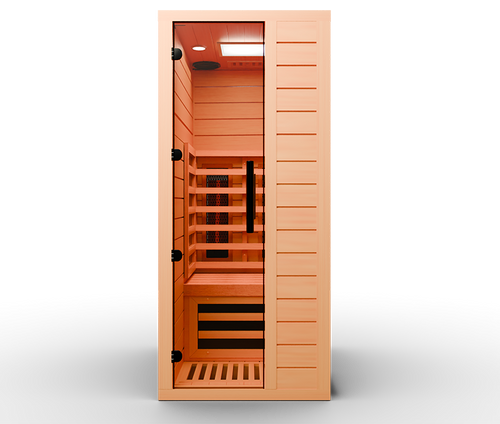There’s a reason so many longevity-focused wellness experts are recommending cold plunge and sauna routines—it’s not just about muscle recovery or mental clarity. It’s about building long-term resilience at the cellular level. When you regularly expose your body to controlled stressors like heat and cold, you strengthen key systems like circulation, thermoregulation, metabolism, and immune response.
In the sauna, your heart rate increases, blood vessels expand, and your body begins producing heat-shock proteins. These proteins help protect your cells from stress and may reduce the buildup of damaged proteins associated with aging. Follow that with a sauna to cold plunge transition, and you engage brown fat cells that help regulate metabolism and insulin sensitivity. Cold exposure also activates genes associated with anti-inflammatory processes and mitochondrial health.
What does all of that mean? It means that contrast therapy can be a powerful way to support healthy aging, maintain cognitive sharpness, and keep your immune system resilient over time. For those focused on living longer and better, a regular sauna and plunge routine is one of the simplest, most effective tools you can use.
Choosing The Right Time Of Day For Sauna And Cold Plunge Sessions
One of the most common questions about sauna and cold plunge therapy is when to do it. While there’s no one-size-fits-all answer, choosing the right time of day can help you align your session with your personal goals—whether that’s energy, recovery, or sleep.
For an early boost in focus and mood, a cold plunge sauna session in the morning can be incredibly effective. The cold plunge jumpstarts circulation and releases norepinephrine, a neurotransmitter that improves alertness and motivation. Pair that with a short sauna session before or after, and you’ll walk into the rest of your day with mental clarity and reduced stress.
If recovery is your top priority, the best time for a sauna with cold plunge session is after a workout. Sauna heat helps loosen tight muscles and improve blood flow, while cold immersion reduces post-exercise inflammation and speeds up repair. Doing both within an hour of training can noticeably shorten your recovery time.
Want better sleep? Aim for your session in the evening. A sauna to cold plunge cycle an hour or two before bedtime can signal to your body that it's time to wind down, lowering your heart rate and core temperature so you’re ready to rest.
No matter when you schedule your contrast therapy, consistency is more important than perfection. Choose a routine that feels manageable and sustainable in your lifestyle. And with Medical Saunas’ easy-to-use cold plunge and infrared sauna systems, setting that rhythm has never been easier.
Designing The Ideal Sauna With Cold Plunge Setup At Home
Creating your personal sauna with cold plunge environment doesn’t have to be complicated or cost-prohibitive. Thanks to Medical Saunas' collection of premium infrared saunas and cold plunge tubs, building a spa-quality setup at home is easier than ever.
Start by choosing the best sauna for your space and wellness goals—whether it’s a compact infrared unit or a larger family-sized model. Then, add a cold plunge tub nearby for seamless transitions. Some people alternate between sauna and plunge in a single session, while others use them separately depending on the time of day or recovery need.
A well-planned setup can turn your garage, backyard, or spare room into a dedicated space for stress relief, healing, and transformation. And because all of Medical Saunas’ equipment is designed with ease-of-use and durability in mind, you’ll enjoy lasting benefits for years to come.
What Makes Medical Saunas the Leader in Contrast Therapy Equipment?
When investing in a sauna and plunge setup, quality matters. Medical Saunas stands out by combining doctor-designed innovation with top-tier craftsmanship. Each sauna is built with hypoallergenic hardwoods, full-spectrum infrared heaters, and ergonomic features that support daily wellness use.
Their best infrared sauna models are quiet, energy-efficient, and ready to use within minutes—perfect for home users who want convenience without sacrificing performance.
The cold plunge tubs are just as advanced. With precision temperature control, quiet operation, and medical-grade filtration systems, they make cold exposure safe and consistent. Whether you're new to the practice or already a contrast therapy veteran, Medical Saunas offers everything you need to upgrade your wellness routine—built with science, tested by users, and trusted by professionals.
Elevate Your Wellness Journey with Medical Saunas
At Medical Saunas, we offer a range of products designed to seamlessly integrate into your lifestyle:
- Best Infrared Sauna: Experience deep tissue relaxation and detoxification.
- Cold Plunge: Rejuvenate your body with our state-of-the-art cold plunge systems.
Embrace the harmonious balance of heat and cold. Transform your health regimen with Medical Saunas' expertly crafted solutions.
Read also:




















































